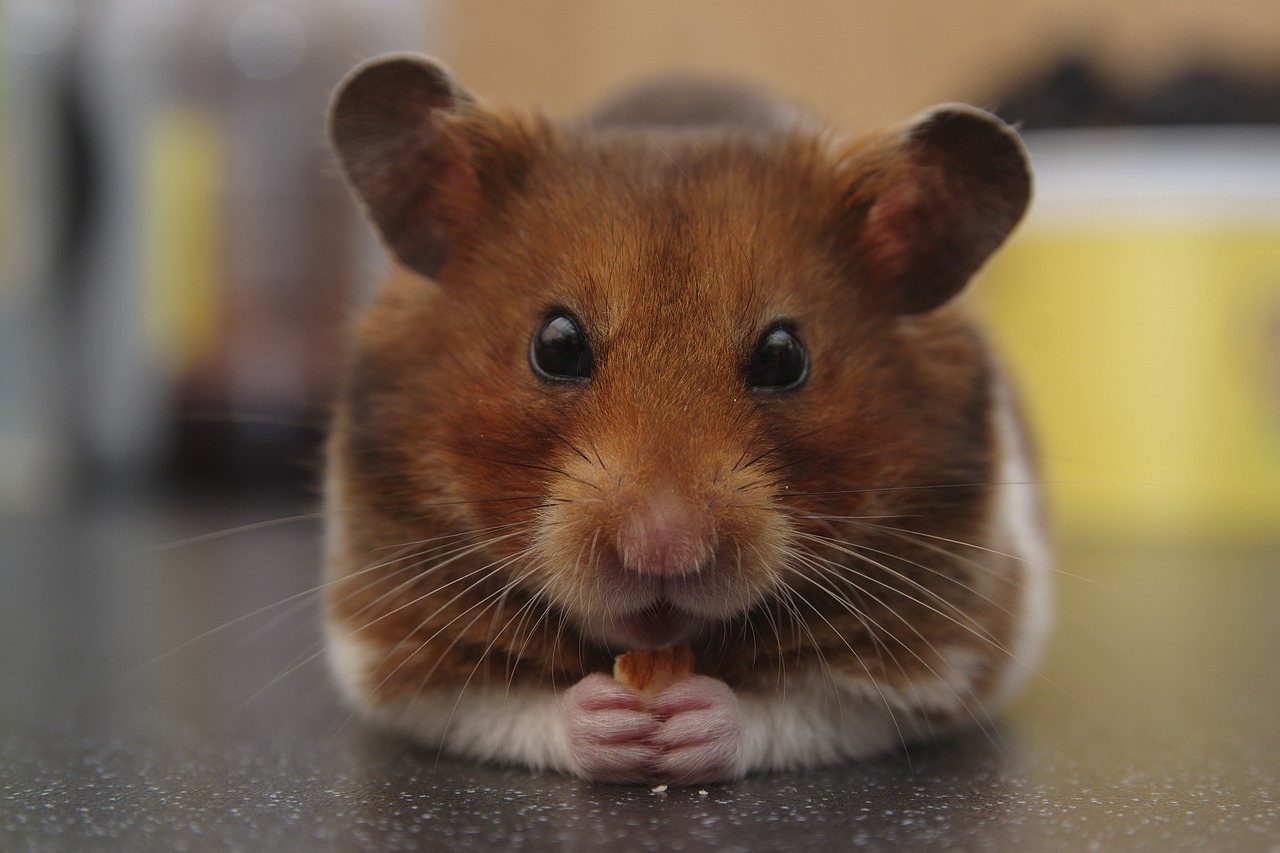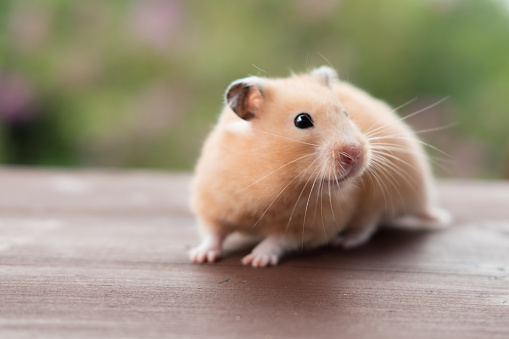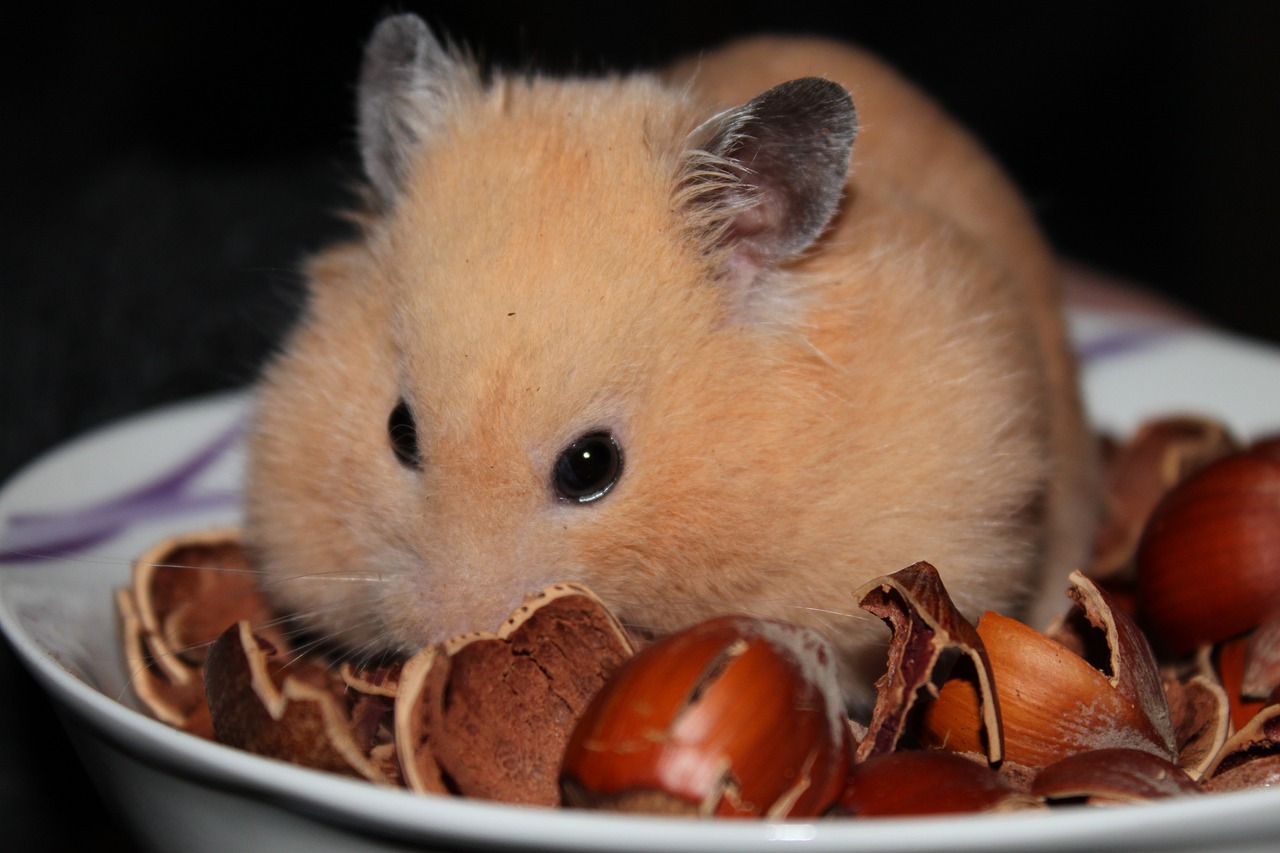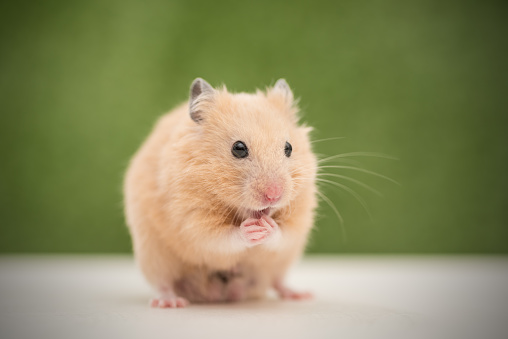For decades, many families have enjoyed hamsters as pets. These furry creatures are easily recognizable because of their sturdy bodies, fluffy ears, short tails and full cheek pouches. Hamsters are both mischievous and intelligent, making them a favorite among pet parents. There are more than 20 varieties of hamsters, ranging from dwarf to standard, that are kept as pets. The most popular pet hamster is the teddy bear hamster. This breed is also known as the Syrian Hamster or Golden Hamster. As a pet, the teddy bear hamster has so many advantages. For example, they have low space requirements, are effortless to feed, and cost very little in time to care for. Not only do those little guys look cute and act funny, but each one has a unique personality. Think they’re hard to interact with? Come on, there is no such thing as a hamster that doesn’t know how to play, there are just owners who lack creativity.
Contents
Appearance of Teddy Bear Hamster
Teddy bear hamsters are characterized by their golden yellow fur and white- or cream-colored bellies. Other color variations include cinnamon, flecks (patches of two colors), and cream. Their fur is thick and usually shorter compared to some dwarf hamster species. The lifespan of a teddy bear hamster is usually 2-3 years. They are a larger pet hamster, up to 6-7 inches in length and 90-140 grams in weight. Larger teddy bear hamsters are great for parents and children to watch. They are usually friendly with people and will warm up your family with time and gentle contact. Teddy bear hamsters prefer to live alone and pair off without a group, so they are best kept alone.

Gentle and Docile Nature
The teddy bear hamster is a docile and active animal. It usually likes to sleep, but does not like sunlight and most have the habit of living alone. The Teddy Bear Hamster has poor eyesight and owners should avoid placing it in high places to prevent it from falling. It has a sensitive sense of smell and hearing, so excessive noise should be avoided so as not to adversely affect the teddy bear hamster. The character of different species of hamsters varies greatly. Roughly after getting close to the owner, or after being tamed, the character becomes calm during the process of getting along, but the hamster is afraid of life, loves to clean, but does not love to drink water, does not love the sun, and likes to stay in the nest. Most hamsters are solitary animals and will attack each other in the event of a fight over a territorial intruder, food competitor, or mate.

Low Maintenance and Easy Care
Teddy bear hamster is an herbivore, owners can feed some melon seeds and other food on a daily basis. It can enhance the relationship with the teddy bear hamster. If the teddy bear hamster appears to leap around after eating the food, it may not be full, and you can add a little more food appropriately. But you need to be careful not to feed the teddy bear hamster food such as chocolate, which may cause it to get sick.
In addition, the owner does not need to think about giving them a bath, this point is different from the usual breeding cats and dogs, because the hamster has the habit of self-cleaning. Owners can also buy some bath sand, they will go to roll in it to clean themselves.

Interacting with a teddy bear hamster
Hamsters are adorable pets that exhibit a number of interactive behaviors to communicate and play with their owners. When you open the teddy bear hamster cage or enter their activity area, the teddy bear hamster may look around curiously, and then intend to run next to you or around your feet.

Sometimes they will touch your hand or forehead with their little nose to detect and show you trust. They also like to be held, but this takes some getting used to. As Teddy Bear Hamsters have a keen sense of smell, they will try to sniff your fingers or clothes and recognize who you are by smell. And they love to chase, they are also very smart and can learn to play simple games such as rolling a ball, racing and so on. Although they can’t talk, squeaking, squeaking, emitting smells or body language are their way of communicating, and you need to pay attention to their language and behavior.

Interacting and communicating with our teddy bear hamsters is a fun and inspiring process. The process of interacting with your hamster is made better by building trust, creating a warm and cozy environment, and providing them with adequate food, water, and activity. Also, listening to their language, observing their posture and expressions, and by rewarding good behavior and respecting their wishes are all key tips for communicating with your hamster. Let’s build a good bond with my pet and bring more joy and happiness to our pets.